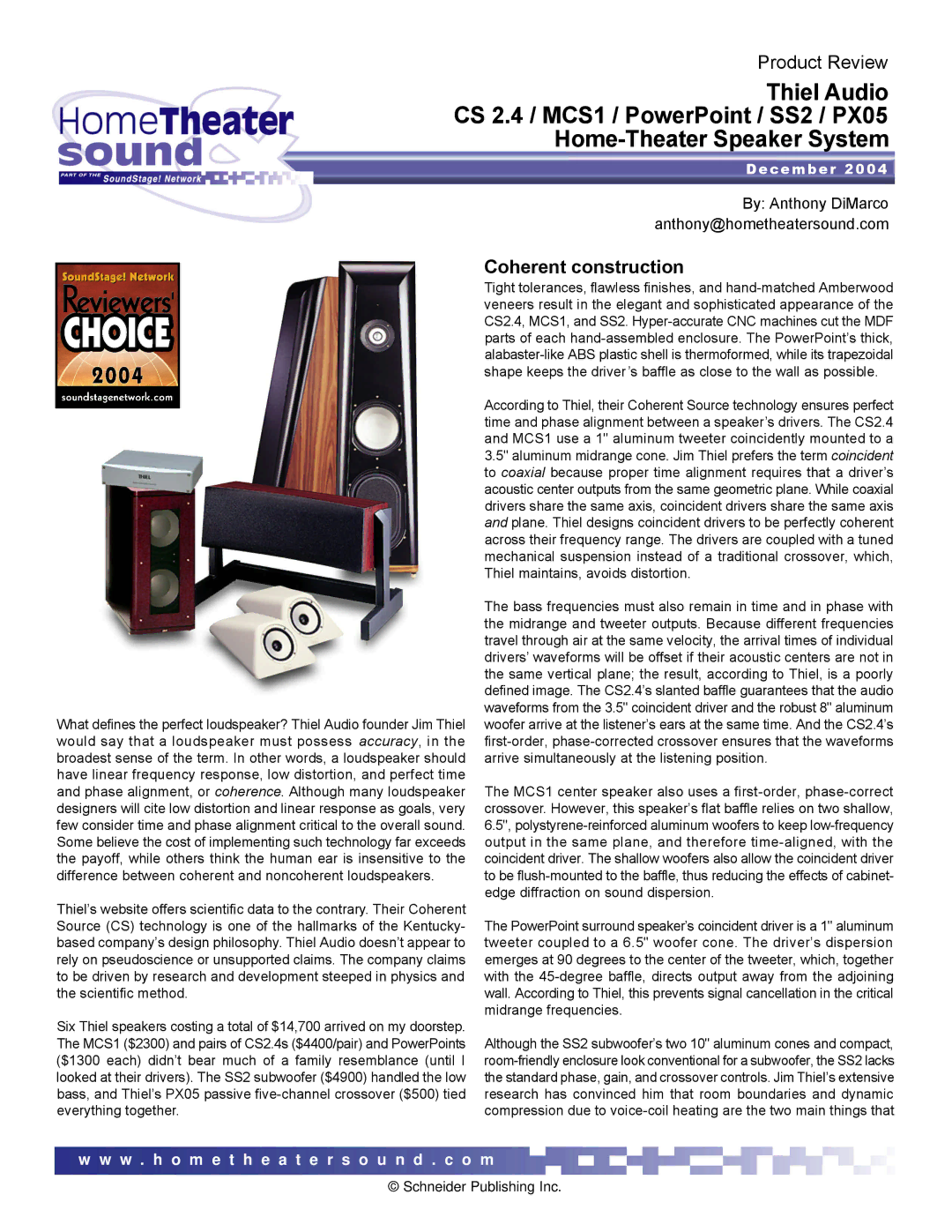MCS1, PX05 specifications
Thiel Audio, a name synonymous with high-fidelity sound reproduction, has long been a prominent player in the audio equipment industry. Among its range of innovative products, the MCS1 and PX05 stand out due to their advanced technologies and distinctive features that cater to discerning audiophiles looking for premium audio experiences.The Thiel MCS1 is a compact loudspeaker designed for versatility without sacrificing audio quality. It features a full-range driver complemented by a unique passive radiator design, which enhances bass response while maintaining a clear and accurate midrange. This speaker is particularly well-suited for small to medium-sized spaces, offering adaptability for various setups, whether in home theaters or stereo configurations. The sleek design not only looks good in any room but also minimizes cabinet resonance through its carefully engineered construction.
The PX05, on the other hand, is a powerful amplifier that pairs seamlessly with the MCS1, delivering the dynamic range needed to bring music to life. Utilizing Class D amplification technology, the PX05 offers superior efficiency and low distortion, ensuring that even the most complex passages are rendered with clarity. This amplifier is equipped with multiple input options, allowing for easy connectivity with a variety of source components, from digital streaming devices to vinyl turntables. Its robust output power provides exceptional headroom, making it ideal for both casual listening and serious music sessions.
One of the standout technologies in the MCS1 is Thiel's proprietary design philosophy, which emphasizes phase coherence and time alignment. This ensures that sound waves reach the listener’s ears in a precise manner, creating a natural listening experience that is often likened to live performance. The PX05 supports this vision by providing dynamic power management, which maintains consistent performance across different listening environments.
In summary, Thiel Audio's MCS1 speaker and PX05 amplifier embody the brand's commitment to high-quality sound reproduction through innovative engineering and thoughtful design. Together, they offer a compelling audio solution that meets the needs of audiophiles and casual listeners alike, ensuring an immersive musical experience in any setting. Whether enjoying a late-night jazz session or the latest blockbuster movie, the MCS1 and PX05 create an engaging atmosphere that enhances the enjoyment of audio in its finest form.

